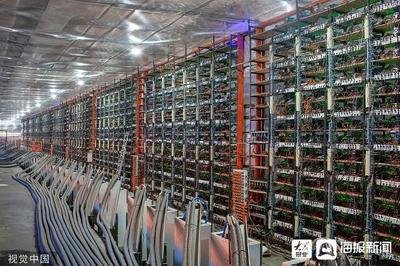In the sprawling landscape of cryptocurrencies, Monero (XMR) stands out as an enigma, offering privacy and anonymity that few of its counterparts can boast. As one delves into the world of Monero mining, understanding the relationship between equipment costs and overall profitability becomes vital. The allure of mining XMR can be intoxicating, yet it demands a comprehensive grasp of how the initial investment shapes returns.

At the heart of mining Monero lies the requisite hardware, notably mining rigs optimized for RandomX—Monero’s proof-of-work algorithm. The choice of equipment can range from entry-level CPUs to high-end GPUs or even ASICs designed for efficiency. However, these options come with varying price tags, directly influencing the cost-benefit ratio of mining activities. For those just entering the fray, the capital expenditure on this equipment can be a daunting prospect; hence, an in-depth analysis is necessary.

The initial costs associated with acquiring mining rigs could be a gateway into profitability or a barrier that stifles your ambitions. High-performance GPUs, for instance, can range from several hundred to thousands of dollars, depending on the manufacturer and specifications. Meanwhile, CPU mining can be an inexpensive alternative, appealing to those who wish to minimize their upfront costs. However, while the initial financial investment might be lower with CPUs, the hash rates are considerably less powerful compared to GPUs, impacting long-term profitability.
Electricity expenses cannot be overlooked in this equation; miners need to account for the operational costs that will plague their bottom line. Monero miners often find themselves in a tug-of-war between sustainable energy sources and the financial implications of high electricity rates. Selecting an optimal location for a mining farm, one that offers affordable electricity options, can maximize profits significantly. Some miners flock to warmer climates, facilitating cheaper cooling costs for the equipment.
With a focus on profitability, you cannot ignore the emerging trend of mining machine hosting. Many cryptocurrency enthusiasts are choosing to allocate their funds into professional data centers, where mining rigs are hosted in ideal conditions. This eliminates the need for the significant upfront costs associated with setting up a mining farm, and instead, miners can pay a fee for the services offered by these facilities. Hosting options not only save time but can also provide higher profitability margins if managed well.

The fluctuating landscape of cryptocurrency prices significantly impacts mining profitability. As Monero’s value ebbs and flows, the effectiveness of any mining operation is invariably affected. Thus, the ability to read market trends and react accordingly becomes imperative. It’s often observed that when the price of Monero soars, more miners enter the market, leading to increased competition that can dampen individual profit margins. On the flip side, during downturns, fewer miners may compete for rewards, and savvy investors can capitalize on lower operational costs to earn maximum ROI.
The rise of asset management strategies is another dimension to consider. Some miners are beginning to diversify their portfolios not only by acquiring Monero but also exploring other digital currencies. This approach mitigates risks inherent in the cryptocurrency market. Investing in multiple currencies such as Bitcoin (BTC), Ethereum (ETH), and Dogecoin (DOG) alongside Monero can be a safety net against the volatility that defines the crypto world.
In summation, the interconnection of equipment costs and mining profitability for Monero cannot be overstated. Factors such as hardware selection, electricity expenses, hosting options, and market dynamics play significant roles in determining success. For potential miners looking to dive into the depths of Monero, a strategic approach encompassing smart investments and adaptive strategies could well be the beacon that guides them to profitability.
A deep dive into Monero mining economics. Equipment costs can cripple profits; careful planning is key. Consider power consumption and pool fees, too!